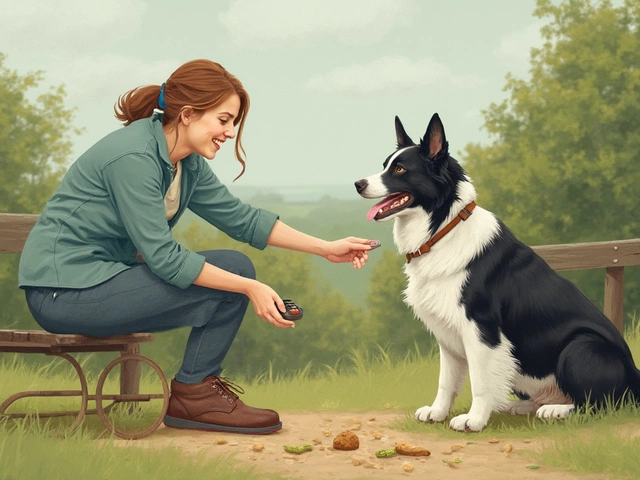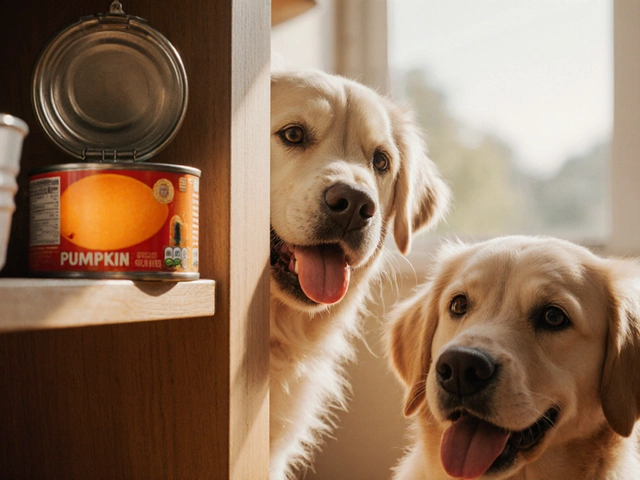Ever catch yourself debating whether to toss a blanket over your puppy’s crate before heading to bed? You’re not alone. Tons of new dog owners ask this question, hoping to help their pups sleep better at night. Turns out, there’s no one-size-fits-all answer—sometimes a crate cover is just what a dog needs, but it can make things worse for others.
Some puppies settle down quickly when their world gets darker and quieter. Covering the crate can block out busy household lights, shadows, and noise, creating a little den where your dog feels safe. It’s kind of like pulling the covers over your head when you want to block out the world. But that trick doesn't make every pup happy—some get anxious, even stressed, if they can’t see what’s going on around them.
- Why People Cover Dog Crates
- When It Helps—and When It Doesn't
- What to Watch Out For
- How to Cover a Crate Safely
Why People Cover Dog Crates
Ever wonder why so many folks cover their dog crates at night? There’s actually a mix of reasons, and a lot of them come down to making life easier for both puppies and their owners. Dogs are naturally den animals. In the wild, they’d find a safe, dark nook to sleep and feel protected. Covering a crate can mimic that cozy den vibe, helping some pups feel more secure.
For new puppies especially, nighttime can be noisy and confusing. TVs, hallway lights, or even headlights outside the window can keep them restless. By draping a blanket over part or all of the crate, you block out those distractions and cut down on stimulation. It’s not just about comfort—a covered crate can also help set a consistent bedtime routine, which makes sleep easier for everybody in the house.
Check out a few common reasons people cover crates:
- dog crate training: Helps signal bedtime or quiet time to your pup.
- Reducing visual stress: Dogs that bark at every flicker or shadow settle down faster.
- Warming things up: A cover holds in a little extra warmth, useful if your place gets cool at night.
- Noise muffling: Cuts back on outside sounds that might spook a light sleeper.
According to a recent pet owner survey by the American Pet Products Association (APPA), about 60% of new puppy parents said they tried covering their dog’s crate to help with sleep and crate training. Not all kept doing it—some dogs just didn’t care, while others got a lot calmer and slept through the night.
| Reason | Pet Owners Who Tried Covering |
|---|---|
| Help puppy sleep longer | 38% |
| Reduce barking/restlessness | 27% |
| Cut down on light/noise | 21% |
| Warmth/comfort | 14% |
Bottom line—covering the crate is about giving your dog a sense of safety. But it only works if the dog is cool with it, which you’ll figure out fast once you try it a couple nights in a row.
When It Helps—and When It Doesn't
There’s no magic in covering a crate, but sometimes it works like a charm. If your puppy gets freaked out by lights, sudden noises, or movement after dark, a cover or blanket can turn the crate into a cozy hideout. Lots of dogs are natural den animals—they like the sense of security that comes from small, enclosed spaces. In fact, some trainers say a covered crate can help calm puppies during thunderstorms, fireworks, or even just when house traffic keeps buzzing late at night.
But it doesn’t always go smoothly. Some dogs get more anxious if they’re shut away and can’t peek out. If your puppy whines, barks, scratches, or chews at the crate after you cover it, that’s a pretty clear sign covering the crate isn’t working for them. Brachycephalic breeds like bulldogs and pugs may also struggle if airflow is reduced with a thick blanket, so always watch your puppy closely at first.
Still unsure? Here are quick points to help you decide if covering the crate helps or hurts:
- If your dog chills out with less light and noise, give a blanket a try.
- If your dog freaks out, pants, or seems restless, skip the cover.
- Never use heavy, heat-trapping materials if your house gets warm. Overheating’s a real risk.
- Leave one side of the crate uncovered at first, so air flows and your dog doesn’t feel closed off.
Vets sometimes mention that puppies sleep better in a dark, quiet environment. A small survey by the American Kennel Club in 2023 found about 54% of dog owners felt that covering their dog’s crate led to fewer nighttime wakeups. But—and it’s a big but—every dog’s different. Some love the extra darkness, others just want to keep you in their sights all night.
| Crate Cover Effect | Percentage of Dogs Helped (2023 AKC Survey) |
|---|---|
| Slept longer | 38% |
| Calmer at night | 54% |
| No difference | 32% |
| Got anxious | 8% |
The big takeaway: don’t just cover the crate and walk away. Watch how your puppy reacts over several nights. The dog crate isn’t just a sleeping spot—it’s a bit of a science experiment. Try things out, and pay attention to the results.

What to Watch Out For
Slapping any old blanket over your pup’s crate sounds easy, but there are a few things you need to keep in mind. Not all dogs like it, and sometimes it’s downright risky. Here’s what you really need to pay attention to before you go all in on the cover idea.
- Dog crate overheating: Puppies don’t handle heat as well as adults. If the crate’s totally covered, airflow tanks. Your little fluff might end up panting, or worse—overheating. If your place gets warm at night, check under the blanket regularly to make sure it feels comfortable. Some owners use a crate thermometer just to be sure—aiming to keep it under 75°F (24°C).
- Chewing and choking: Some pups get bored or stressed and tug at whatever’s close—even a blanket. If your dog is a chewer, skip heavy covers that could get pulled in and shredded. Swallowed fabric can mean an emergency vet visit.
- Sudden anxiety or barking: If your dog starts whining, barking, or acting restless after you cover up the crate, don’t push it. Some dogs feel trapped if they can’t see what’s happening outside. Try leaving a couple of sides open and see if that helps.
- Nighttime accidents: Young puppies need to go out for potty breaks, and a covered crate can make it hard for you to notice their signals. Watch for any signs your puppy is fussing because they need the bathroom, not just because they’re bored.
Here’s a quick data snapshot on crate covering:
| Issue | Percent of Owners Noticing |
|---|---|
| Crate Cover Calmed Dog | 53% |
| Increased Barking with Cover | 29% |
| Caught Chewing Blanket | 17% |
If you decide to use a blanket, check it before bed for chew marks or wear. Also, skip electric blankets or anything with strings—those are a no-go. Always let your dog’s reaction decide what works best.
How to Cover a Crate Safely
If you’re thinking of covering your dog's crate, there’s a right way and a wrong way to go about it. Do it safely, and you can help your puppy feel more comfortable. Do it wrong, and you might cause stress—or even a health risk.
Pick a lightweight, breathable blanket or towel. You want airflow, so your dog doesn’t get too hot or struggle to breathe. Forget thick quilts and heavy comforters—you need something closer to a thin bed sheet. Some folks use special crate covers, which are made for this and often come with built-in flaps you can open or close.
Never cover the whole crate from top to bottom and front to back. Always leave at least one side open for circulation. If your dog’s crate is in a corner, keep the front or a side uncovered. Here’s why it matters:
- Dogs can overheat much faster than you might think, especially if the room is warm—even more so for flat-faced breeds like Frenchies and bulldogs.
- Lack of airflow raises humidity, making smells and bacteria build up. That’s never good for a crate or your dog.
Keep an eye on your pup’s body language. If he starts panting, scratching, or whining, try uncovering more of the crate. Some dogs just don’t like the cover—don’t force it.
It’s smart to double-check for chewing. Puppies love to nibble anything within reach. If your dog starts tugging at the blanket, don’t risk letting him swallow pieces or get tangled up. Try a different fabric or ditch the cover altogether.
Here’s a simple breakdown of what to do and what to avoid:
| Do | Don’t |
|---|---|
| Use a thin, breathable material | Use heavy, thick blankets |
| Leave a side open | Cover the whole crate |
| Check on your puppy regularly | Ignore signs of distress |
| Use a purpose-made crate cover, if you have one | Let your puppy chew on the blanket |
If you ever notice your dog acting weird or stressed after you cover the crate, just skip the whole thing—no need to push it. Covering the crate at night works for some, but it’s not the magic solution for every dog crate setup. You know your pup best, so trust your gut, and always put safety first.





